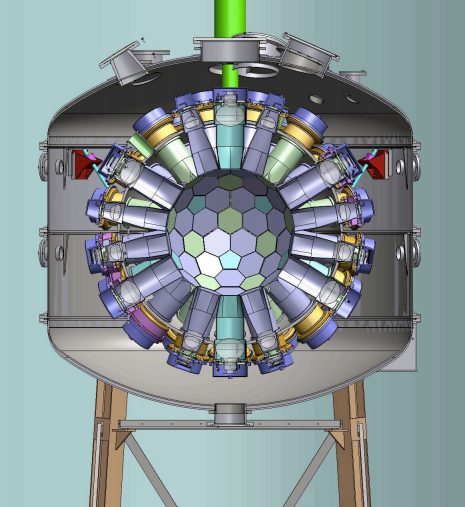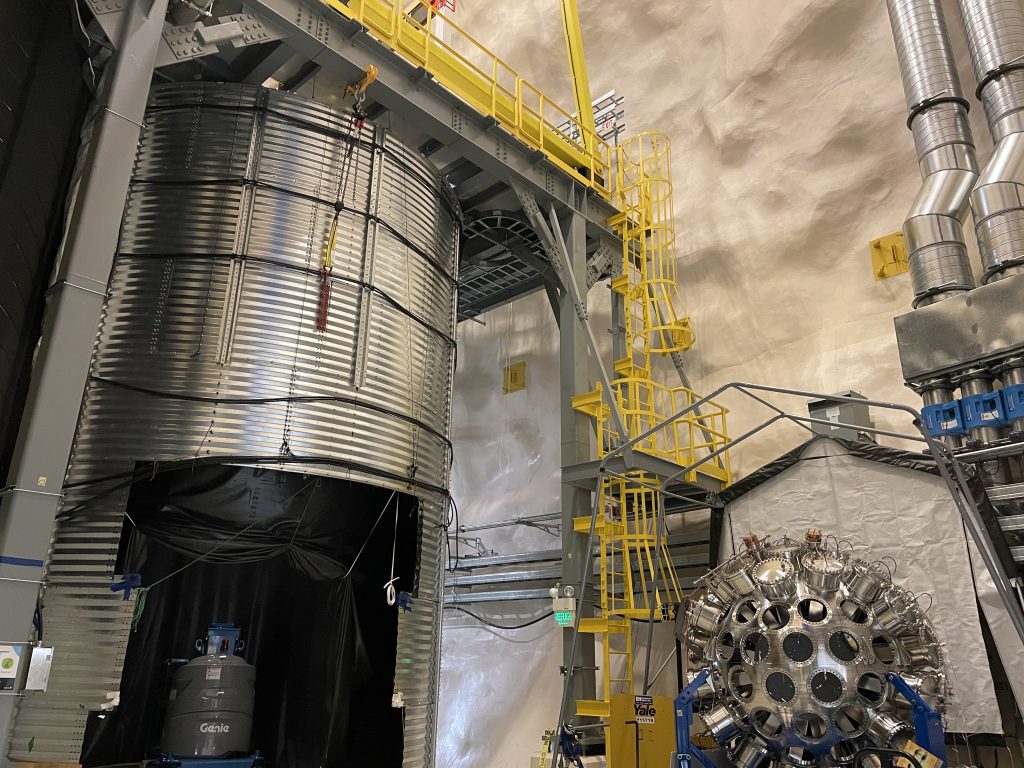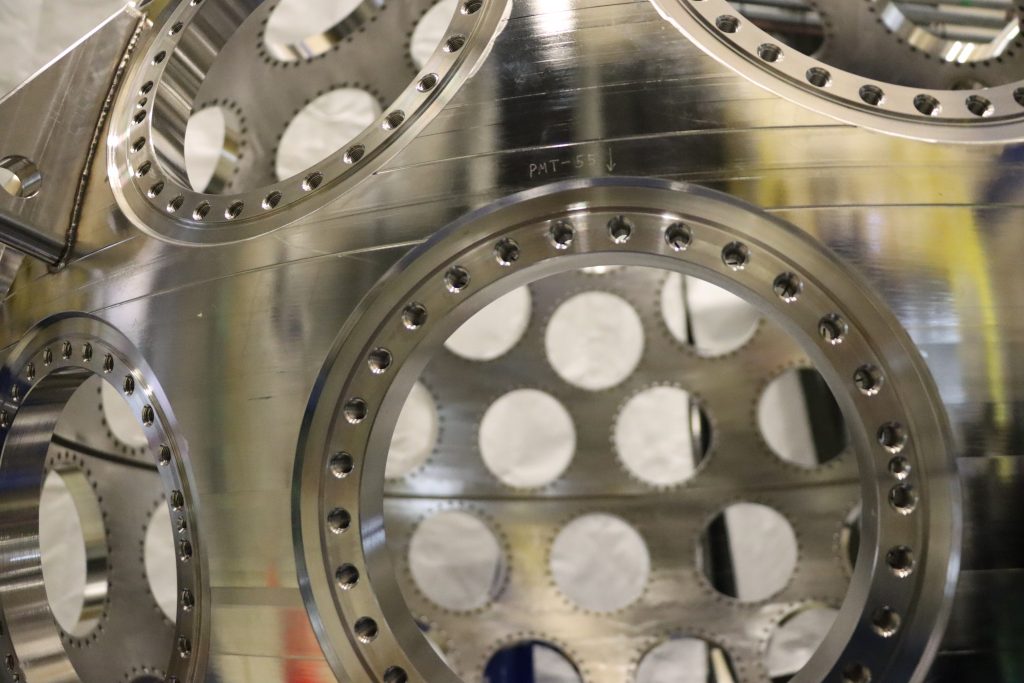
MiniCLEAN: From experiment to exhibit
Is it a bird? Is it a plane? Is it an alien spacecraft? No! It is a piece of a dark matter experiment! Earlier this summer a new outdoor exhibit made its way to Science North from SNOLAB. The large stainless-steel sphere was the inner vessel for the MiniCLEAN dark matter experiment that operated at the lab from 2013 to 2019.
MiniCLEAN was a research and development component of a global program to use the unique properties of Argon and Neon to test new technologies for WIMP searches, a dark matter candidate particle. It consisted of the displayed inner vessel made of ultra-clean stainless steel that held 500 kg of liquid argon or neon and was surrounded by 92 sensitive photodetectors watching for particle interactions. The entire vessel was then located in a large cylindrical water tank over 2 stories tall (25’ tall, 18’ diameter) to provide additional shielding from unwanted particle interactions.


“We hope that having this unique object that was an important part of a large, international experiment on public display is both interesting and inspiring for visitors to the science centre,” said Blaire Flynn, Senior Education and Outreach Officer at SNOLAB. “It is a custom piece with many specialized features that was created by a team of highly skilled researchers, technicians, and tradespeople”.
Visible on the display are several interesting features that mark its journey in science. In several locations on the display you will find engraved letters. Some of these correspond to scientists and students that worked on the experiment. The engravings with “PMT” were used to record the different PhotoMultiplier Tube (PMT) locations. Although the inner vessel was very carefully transported underground in one piece, during the decommissioning process for the experiment it was cut in half to allow for easier transport to surface. The weld line where it was put back together for the exhibit is now visible along the middle of the sphere.

When asked about MiniCLEAN’s time at SNOLAB, Dr. Jeter Hall, Director of Research, said, “MiniCLEAN represents a step forward in dark matter sensitivity. Although MiniCLEAN didn’t find any signals from dark matter, the project successfully educated up-and-coming leaders in the field. The engineering and scientific effort on this project helped advance the worldwide effort to uncover the nature of dark matter”.
Data from MiniCLEAN has informed the development of next-generation dark matter experiments like DEAP-3600 (SNOLAB), DarkSide-G2 (Gran Sasso), and the design of detectors several orders of magnitude larger. SNOLAB continues to search for the elusive dark matter with several experiments currently collecting data and additional experiments being built – each using different detection techniques.
Even though no experiment has discovered dark matter they haven’t failed – in fact, many have been quite successful. Instead, they have narrowed the field of search. Seeking dark matter is like looking for a lost item in your house – As you hunt through each room, you systematically eliminate places where the object could be. The search for dark matter is far from over – with data from each experiment, we come closer to understanding this important part of our universe.
Experiments such as MiniCLEAN have long lead times and can take a decade or more to complete. They provide important opportunities for training where students gain impactful experience on detector hardware and construction. Some of the students who worked on this project are now senior researchers in the field.